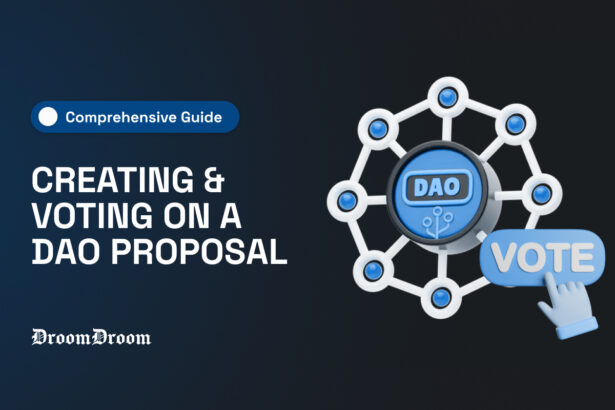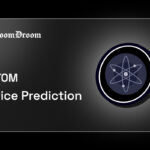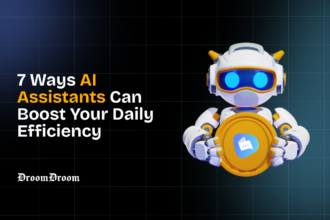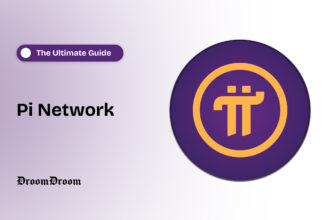Since DAOs first sprang up in 2016, they’ve redefined governance.
- What Is a DAO Proposal?
- Crafting and Voting on DAO Proposals: A Step-by-Step Guide
- Step 1: Laying Out the Idea
- Step 2: Writing the Proposal
- Step 3: Testing the Waters with a Temperature Check
- Step 4: Making it Official – Posting on the DAO’s Voting Platform
- DAO Voting Mechanisms – One Vote Doesn’t Always Equal One Token
- Final Words
With nearly 11,000 DAOs today managing over $12 billion in combined treasuries, one thing’s clear—they’re serious, and they’re here to stay. Whether you’re looking to change your DAO’s strategy, pay a contributor, or propose a new initiative, understanding how to make and vote on a DAO proposal is essential.
This guide breaks down exactly what you need to know about the DAO proposal process, from crafting proposals to casting your vote, so you can shape the DAO with impact.
What Is a DAO Proposal?
A DAO proposal is, quite simply, an idea that a DAO member wants the community to act upon. Think of it as a democratic move, something that’ll only get executed if it resonates with the community. Proposals can range from simple budget allocations to extensive protocol changes. And while they vary, the successful ones have a few things in common: clarity, purpose, and the details to support them.
Some DAO proposals are “just ideas,” while others go beyond, embedding actual actions—like software instructions—that automatically execute on the blockchain if the proposal passes. This could mean transferring funds, minting tokens, or deploying new smart contracts. But the road from idea to implementation is longer than one might think. It’s a multi-step journey that depends on transparent dialogue, structured forums, and a final on-chain vote to make the vision a reality.
Crafting and Voting on DAO Proposals: A Step-by-Step Guide
At the heart of every DAO is a process that ensures democratic decision-making—DAO proposal creation and voting. From allocating funds to launching new initiatives, proposals are the vehicle through which DAOs make changes. But the steps to getting a DAO proposal from idea to execution are nuanced, involving thoughtful planning, strategic drafting, and community engagement.
Below, we break down each stage of this journey so you can learn how to create a DAO proposal that resonates with your community and vote effectively to support the best ideas within your DAO.
Step 1: Laying Out the Idea
Start with an idea. But this isn’t your typical brainstorming session; by the time it’s a proposal, it should be fully baked. DAOs like Curve and Aave, with massive treasuries and influence, show that DAO proposals need more than mere enthusiasm—they need clarity, a solid plan, and financial specifics. The first step for many DAOs is to have members draft an outline and get feedback from the community. Before a single vote is cast, proposals typically circulate in forums like Discourse or Snapshot, where members weigh in on the feasibility, value, and risks.
Look to examples from established DAOs. Compound, for instance, insists on proposals as “executable code,” meaning they don’t want vague requests cluttering the forums. In another model, Aave breaks its proposal process into several rounds, including a community feedback phase, a preliminary vote, and then the final Aave Improvement Proposal (AIP) stage, where the proposal officially lands.
Step 2: Writing the Proposal
The art of writing a DAO proposal lies in structure and clarity. Most DAOs use a template that includes these essentials:
- Title: Make it straightforward; anyone reading it should know the gist at a glance.
- Short Description: Describe the proposal in one or two sentences. For example, if you’re suggesting funding for a new contributor team, the description should capture exactly that.
- Scope: This is where you get into the details. Why does this DAO proposal matter? What will it cost? How will you carry it out? The best proposals spell out the entire journey from intent to execution, leaving no gaps in understanding.
- Technical Specs (if needed): Any code changes or blockchain-specific actions go here.
- KPIs: Some DAOs love metrics, and if you can show data or results that the proposal aims to achieve, lay them out.
- Team: If there’s a team involved, list their names and relevant experience.
- Next Steps: Outline what happens if the DAO proposal passes—think of it as a blueprint for the execution phase.
DAOs have learned that a strong structure prevents back-and-forth debates, helps voters make informed decisions, and ensures that the community understands the purpose and impact of each DAO proposal.
Step 3: Testing the Waters with a Temperature Check
Some DAOs, especially those with big stakes like Arbitrum, recommend a “temperature check”—a poll where members informally signal their support or opposition. It’s an opportunity to iron out objections and make adjustments before the proposal officially enters the voting stage.
This early feedback matters. Often, a proposal that fails a temperature check would’ve flopped in an on-chain vote. DAOs like Arbitrum do this through platforms like Snapshot, which allow token holders to vote without paying gas fees. This can be a lifeline for gathering diverse perspectives without wasting resources on a formal vote.
Step 4: Making it Official – Posting on the DAO’s Voting Platform
Once the draft is in top shape and has passed the temperature check, it’s time to submit it to the DAO’s official voting platform. Each DAO has its own specific system for submission—many use Snapshot for off-chain votes, while on-chain voting often requires the use of Tally or Aragon.
Some DAOs require certain thresholds to participate in this stage. For example, Arbitrum asks for a minimum of 1,000,000 votable tokens to create an on-chain proposal. If that sounds high, it’s because DAOs often need stringent requirements to prevent spam, manipulation, or vote-stuffing by big token holders. Many DAOs also encourage smaller members to “delegate” their tokens to larger representatives who share their views, preserving their voice even if they don’t directly vote.
Learn the differences between Arbitrum One and Arbitrum Nova in this guide by DroomDroom.
DAO Voting Mechanisms – One Vote Doesn’t Always Equal One Token
The DAO voting systems are about as varied as the DAOs themselves, each one tailored to the needs and culture of its community. Here’s a look at four common methods:
- Token-Based Quorum Voting: In this standard method, each token represents one vote, and the proposal passes only if it reaches a minimum quorum. Curve, for instance, requires 2,500 tokens to even participate. It’s straightforward but can concentrate power in the hands of those with the most tokens.
- Quadratic Voting: Popularized by MolochDAO, this method requires exponentially more tokens per additional vote, discouraging the wealthiest members from dominating the process. It levels the playing field, creating a space where votes actually mean something, even if you’re not a crypto whale.
- Holographic Consensus: This novel model lets voters “stake” tokens to predict the proposal’s success. Members who guess correctly earn tokens, which encourages engagement without overwhelming members with endless votes.
- Multi-Sig Voting: DAOs like MakerDAO use this system for certain proposals, where a set number of “signatures” from trusted members are needed for approval. It’s practical for security-sensitive decisions but veers away from true decentralization.
Final Words
Voting in a DAO isn’t just a click; it’s an act of collaboration. Once members cast their votes, the DAO proposal either passes or fails. If it passes, the actions embedded in the DAO proposal execute on the blockchain, sending funds, making protocol changes, or enacting the decision as planned. No middleman, no need for approval from above.
DAO governance is still in its experimental phase, but even now, it’s pushing the boundaries of what self-organized communities can achieve. The future of decentralized voting will likely bring in new methods to curb voter fatigue and enhance security, ensuring these digital communities stay robust, transparent, and truly democratic.



















